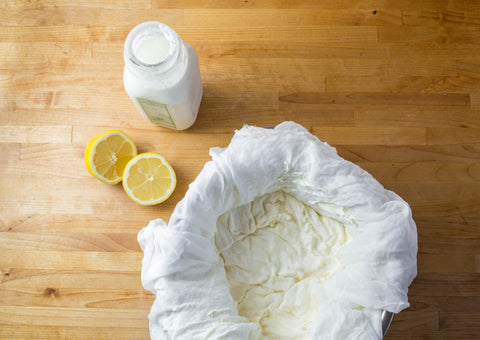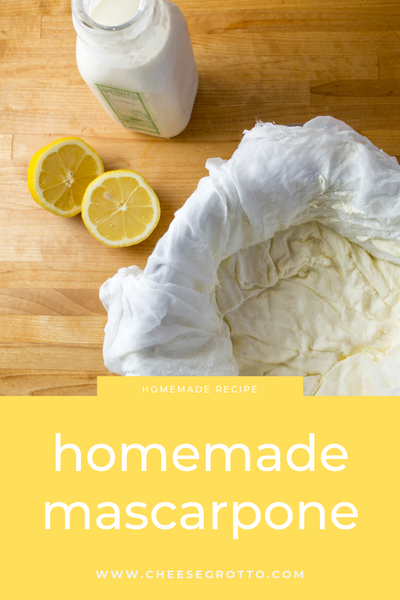
This post is just one of our many cheesemaking recipes, including ricotta, feta, and more. See them all on our blog and check out our virtual cheesemaking classes to learn more!
I’ve tested many different variations of this recipe, and the lemon juice set version is my acid of choice. The great thing about making mascarpone is that it doesn’t hurt the final result if you add a little more lemon juice to the recipe, which only makes the final creamy goodness brighter in lemony flavor. I’m a huge fan of lemons, so that’s all good news to me.
You may be wondering: What other acids could I use instead of mascarpone? I’ve tried white wine vinegar, distilled white vinegar, and citric acid. Please note that if you decide to use another acid, the ratio to the amount of cream may vary slightly. Each acid has a slightly different acidity level, which can yield a slightly different textural result as well as impacting the flavor profile of the mascarpone.
One other important factor to consider is the cream quality. You want to make sure the cream isn’t ULTRA-PASTEURIZED, which means the cream endured a very high temperature heat treatment. Cream and milk of this kind does not bind as well as the regular pasteurized or raw counterparts. The bottle or carton will note ULTRA-PASTEURIZED if it is so. The lower pasteurized versions will simply note pasteurized. I used my favorite local brand of cream from Battenkill Creamery. You must remember: the quality of your mascarpone is the direct result of the ingredients you use.
Recipe
- 2 cups heavy cream (not ultra-pasteurized)
- 1 tbsp fresh-squeezed lemon juice
In a large saucepan, heat cream over over medium heat to a low simmer, until it reaches about 190F (I found I had to go to about 195F to get a gentle simmer going).
Stir in lemon juice and continue to cook for 5 more minutes, keeping it right at about 190F. You may have to turn your burner up and down to keep the temperature constant. Mixture will thicken to the consistency of gravy.
Remove from heat and let cool. Mixture will continue to thicken.
Line a sieve with a clean tea towel or several layers of cheesecloth and set over a bowl. Pour cream mixture into sieve and refrigerate for 8 to 12 hours.
Transfer to an airtight container and press plastic wrap flush to the surface. Can be stored in fridge for about a week.


Leave a comment